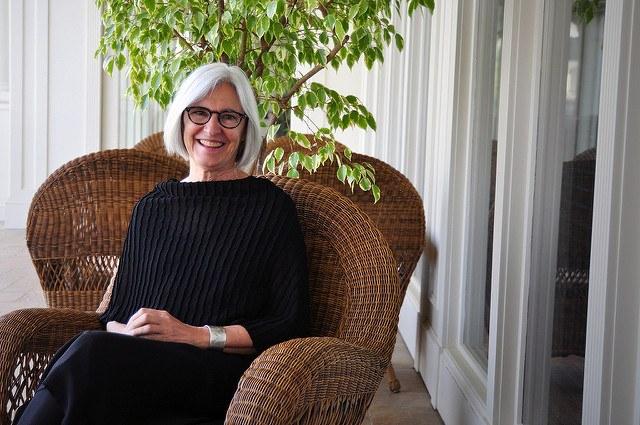
By Ken Alterman, CEO of Savers
It is becoming increasingly clear that the public wants to make greener fashion choices. As more people learn about the impact of their clothing, they want to be empowered to make more informed shopping decisions. According to the Savers State of Reuse Report, more than half of North Americans report they are more likely to practice reuse after learning about the clothing industry’s environmental footprint.
But there’s a problem: People can’t choose sustainably-sourced clothing if it’s not available on the shelves.
The clothing industry has quietly become one of the biggest polluters in the world. The public is only now starting to hear about it through the recent wave of events, films, dialogues and research studies. With the production of a single cotton T-shirt requiring over 700 gallons of water, the fashion industry is now being confronted with the strain it puts on our planet’s finite resources.
Eileen Fisher is one industry leader to publicly acknowledge the devastating environmental impact of the fashion industry, and has unwaveringly pledged to change. Eileen Fisher’s Vision 2020 initiative is guiding her business toward 100 percent sustainable practices while still creating high-quality, timeless and fashionable garments.
Although it may not be apparent that Fisher is blazing a trail when you walk into the nearest mall or department store, she is one of many designers and organizations that remained committed to eco-friendly and sustainable fashion for years.
Take Eco Fashion Week, a nonprofit organization that is dedicated to discovering solutions and innovations to help advance the fashion industry in a sustainable and responsible direction. Founder and President Myriam Laroche uses her deep understanding of retail buying to empower designers, retailers and stylists to embrace sustainable fashion.
And after 10 successful years in Vancouver, Canada, Eco Fashion Week brought the world’s largest sustainable fashion show to Seattle this year to further its mission – highlighting fashion rooted in zero-waste production, eco-friendly textile treatment and development, and the environmentally conscious disposal of unwanted clothing. Two days of runway shows celebrated unique collections fashioned from sustainable materials as well as reclaimed materials.
These efforts are pushing the fashion industry in the right direction, but there is still more work to be done. With high price tags and limited selection, sustainable fashion can seem unattainable to the average person. To truly move the needle and minimize our clothing footprint, sustainable fashion must become mainstream.
From how cotton is grown, fabrics are dyed and garments are manufactured, to how owners care for these items and whether unwanted garments are repurposed or recycled to ensure a second life, sustainably-sourced fashion begins long before a garment is placed on a shelf. And it ends far after a person no longer wears it. Both shoppers and retailers must acknowledge that the real cost of clothing is more than what’s printed on the price tag.
Committing to the affordability, availability and increased visibility of sustainable garments is only part of the solution. As Runway Reimagined at Eco Fashion Week demonstrated, it’s also important for designers, artists and manufacturers to consider what happens to their discarded garments. When over 95 percent of textile and clothing waste sent to landfills is recoverable through recycling or reuse, it’s a huge loss to simply toss these goods away. Runway Reimagined challenged designers and stylists to use unsold secondhand clothing and textiles to create new looks, because the most sustainable fashion is fashion that already exists.
From the production of a garment to its disposal, we must continue to seek out innovative solutions. Given that over 80 billion new pieces of clothing will be purchased this year alone – 400 percent more than we consumed 20 years ago – Savers feels this is an important challenge. Now more than ever, we have an opportunity to create a sustainable fashion future, one that fosters sustainable production and distribution while also addressing waste as a part of the fashion industry. How our industry chooses to respond to these challenges is up to us.
Image credit: Flickr/Matt Dunham
Ken Alterman is the President and CEO of Savers.
TriplePundit has published articles from over 1000 contributors. If you'd like to be a guest author, please get in touch!














